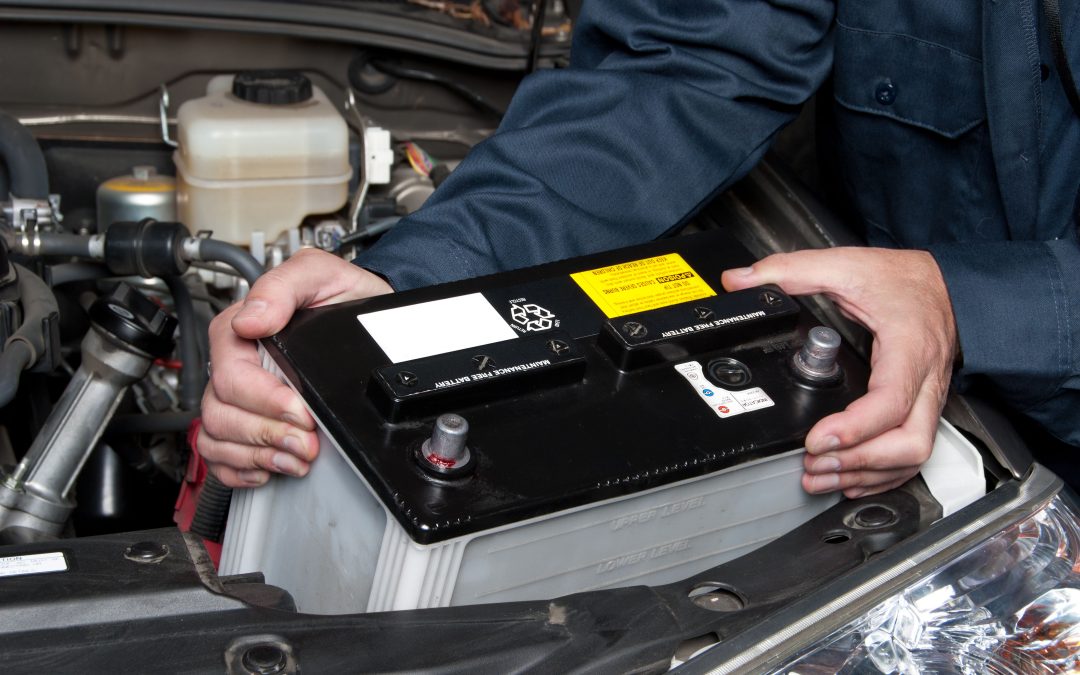In today’s automotive battery market, there are choices available for every application. Beyond the options of amp hours, cranking amps (CA) and cold cranking amps (CCA), there are differences in battery construction. These choices are among three main styles of battery: flooded lead acid batteries, gel lead acid batteries, and absorbent glass mat (AGM) batteries. What are the differences, and does charging play a factor in your choice?
Differences Between Flooded, Gel, and AGM Batteries
Flooded Batteries
Also known as a wet cell lead acid battery, a flooded battery contains liquid inside the case that interacts with the sandwich of lead and lead oxide plates. The liquid is a combination of deionized water and sulfuric acid, better known as simply the electrolyte. The electrolyte carries the charge through the battery.
Some flooded batteries are maintenance-free or sealed, while others are serviceable. In the event the electrolyte level diminishes in a serviceable battery, it can be topped up with distilled water to restore capabilities.
Because the electrolyte is low resistance, flooded batteries are ideal for high discharge applications followed by slow charging. For instance, flooded batteries are a great choice for engine starting applications. They don’t, however, tolerate deep cycle operation very well at all.
Gel Cell Batteries
The composition of gel batteries is very similar to a flooded battery. Alternating lead and lead oxide plates are immersed in an electrolyte. The major difference is the electrolyte: in a gel battery, silica is added to stiffen the electrolyte fluid. This means gel cell batteries are all maintenance-free.
The gelled electrolyte means gel batteries are safer to use and can be mounted in virtually any orientation (except upside down) without a danger of spillage. They are better lasting in hot weather and can tolerate very deep cycle operation. They are not the best choice for starting applications or high-amperage draw situations.
Absorbent Glass Mat Batteries
Like flooded and gel cell batteries, an electrolyte interacts with the battery plates. These plates may be flat, curved, or rolled. Between the plates is a layer of very thin glass fibers in which the electrolyte is suspended for the battery’s full lifetime. Like gel cell batteries, AGM batteries are all maintenance-free. Because both are maintenance free, they often get mistaken between the two despite their manufacturing differences.
AGM batteries are able to be mounted in nearly any position other than inverted, and are quite resistant to damage internally from vibration. Also, they hold a charge much better for intermittent use. Absorbent Glass Mat batteries are the optimal choice for deep cycle applications. Most can tolerate 300 or more cycles with a discharge rate of not more than 60 percent.
What Differences Are There in Charging Requirements?
Caring for a battery may not be as simple as you’d initially suspect. What works for one style can cause irreparable damage to another. Always follow the care instructions for your specific battery type.
Charging a Flooded Battery
Flooded or wet cell batteries work very well when large electrical draws are necessary. A flooded battery is capable of meeting the electrical needs quickly, although replacing the dispensed charge is a different matter. Recharging a flooded battery quickly generates high amounts of heat. The excessive heat will degrade the battery by causing the plates sulfate, resulting in a shorter life cycle than otherwise possible.
Proper charging for a flooded battery requires three stages: constant-current charge, topping charge and float charge. During the constant-current charge, a 1A charge brings the battery charge up to roughly 70 percent. The next step, the topping charge, continues the process up to about 98 percent of the full charge, and the current drops during this stage of the charge. The final stage, the float charge, brings the battery’s charge to full or near-full and maintains it there.
Charging a Gel Battery
A gel battery is intolerant of heat, much like a flooded battery. Instead of simply shortening the battery’s life, improper charging can cause immediate and irreversible damage inside, even for a new battery. When charging a gel battery, it’s critical to keep the charge rate low and slow. Otherwise, heat can cause burns in the electrolyte gel, rendering the battery useless.
A gel battery-compatible smart battery charger is best for charging a gel cell battery. The constant-current charge rate is regulated to keep the battery from overheating, then the charger switches to float charge. A gel battery can be kept for extended periods of time on a float charge.
Charging an AGM Battery
Due to its design, an AGM battery can be charged at a faster rate than a flooded or gel cell battery. In fact, it can be charged up to five times faster than flooded batteries. Once the bulk charge has been completed, it’s critical that AGM batteries are switched to a float charge to finish off the full charge.
AGM batteries are intolerant of overcharging so an AGM battery-compatible smart charger should always be employed.

